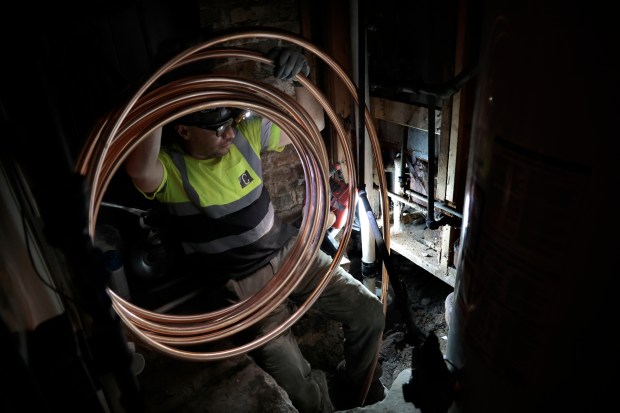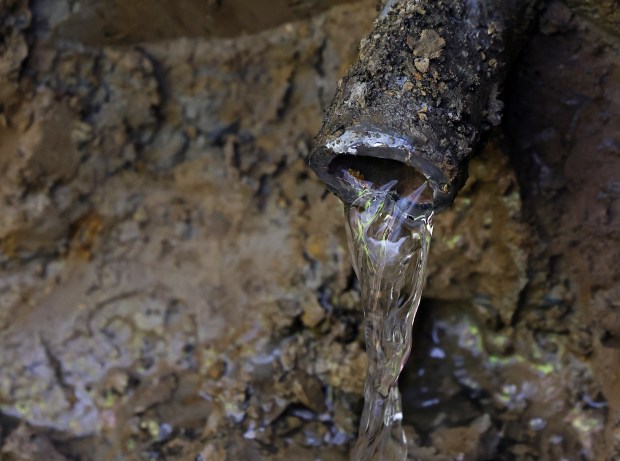Florida is on track to collect nearly $1 billion in federal funds it doesn’t deserve to replace toxic lead pipes, according to a government watchdog report that concludes Illinois and a handful of other states should get the money instead.
By most accounts, Illinois leads the nation in the number of lead service lines connecting homes and two-flats to municipal water systems, largely because Chicago required pipes made of the brain-damaging metal until Congress banned them in 1986.
Thousands of lead pipes also remain underground in Indiana, Michigan, Ohio, Pennsylvania and Wisconsin.
But during the past two years the U.S. Environmental Protection Agency gave Florida the largest share of funding set aside by Congress to replace lead service lines.
The Sunshine State got $483 million, compared with $471 million sent to Illinois, even though several of Florida’s big water utilities told the agency’s inspector general the toxic pipes don’t exist in their service areas.
Florida will double its take during the next two years if the EPA fails to fix the problem, the inspector general concluded.
“This money should be going to states that actually need it,” said Tom Neltner, director of the nonprofit group Unleaded Kids and former assistant commissioner of the Indiana Department of Environmental Management.
In a 2016 study, the American Water Works Association estimated Florida had 200,000 lead service lines. Asked five years later if it had followed up with its own survey, the Florida Department of Environmental Protection told another nonprofit, the Natural Resources Defense Council, it “does not track lead service line (sic).”
But after President Joe Biden brokered a deal with Congress to earmark $15 billion to replace the toxic pipes, Florida officials declared the state has 1.1 million lead service lines, a dramatically inflated number the EPA inspector general’s investigation found is little more than a mirage.
Officials at four of eight Florida utilities interviewed by the inspector general said they told the state they have no lead service lines. All eight disputed the inventory Florida sent to the EPA.
Florida officials blamed the snafu on a contractor but neither state nor federal officials have adjusted the data to reflect reality, according to the inspector general’s report.
Chicago alone has more than 400,000 lead service lines. A 2021 Chicago Tribune investigation found that more than 8 of every 10 Illinoisans live in a community where the brain-damaging metal was found in the tap water of at least one home during the previous six years.

What makes the Florida situation more confusing is the EPA already cut its annual allotment to another state, Texas, after Neltner and other advocates questioned how the agency divvied up its first share of funding from the Bipartisan Infrastructure Law.
Texas got more than $146 million during 2023 but only $28.6 million in 2024 after Houston told the EPA it had flubbed its numbers.
It is unclear if the EPA will adjust future allocations for Florida before Biden leaves office in January. In a statement, the agency said it “continues to work towards our goal of allocating funding to places that have the greatest need.”
Florida received the biggest share of lead service line replacement money so far even though Republicans who dominate the state’s congressional delegation voted against the law that earmarked the funding.
Lead is unsafe at any level. Ingesting even tiny concentrations can permanently damage the developing brains of children and contribute to heart disease, kidney failure and other health problems later in life. Researchers estimate more than 400,000 deaths a year in the United States are linked to lead exposure.



